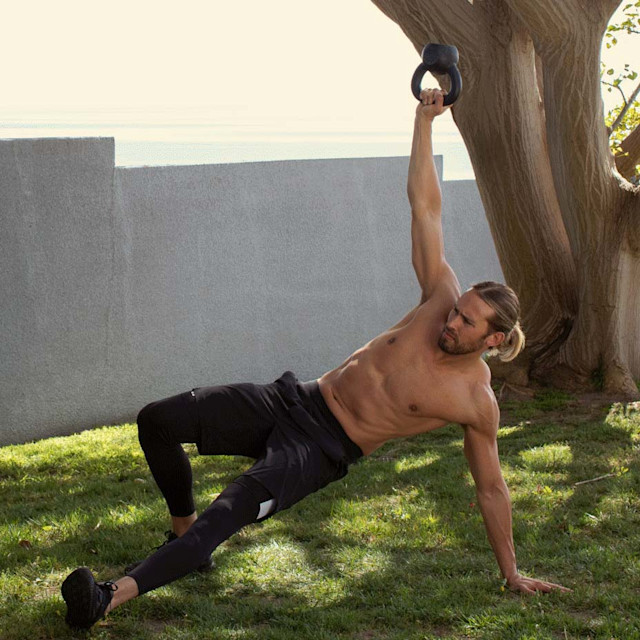Do them for longevity and brain health.
During heavy lifts, the major muscles aren’t always the first to fatigue. Instead, it’s those in the hands and fingers that often give out before all else. “This limits the number of high-quality reps you can complete and leads to a less effective workout,” says Eric Mischke, Tier 3+ trainer at Printing House in New York City.
But grip strength can give you far more than the ability to eke out an extra deadlift or kettlebell swing. In one study, researchers found it’s a better predictor of death by heart disease than blood pressure while another linked it to improved health and brain function. It’s even used in clinical settings to help determine total-body strength.
So if you haven’t made grip strength a priority in your routine yet, you should.
Any exercise that requires you to carry and hold a weight improves the measure to some extent. Still, according to Spencer Davis, Tier 3+ trainer at Miracle Mile in Los Angeles, you’d be smart to dedicate some training to each of the three elements that make up grip strength: pinch, crush, and capacity.
Pinch strength refers to your ability to hold an object by pressing the fingers together. Crush strength involves the whole hand, grasping an object with a closed fist. Capacity is how well you can pinch or crush with additional weight. (For example, squeezing a stress ball improves crush strength while carrying heavy bags by the handles tests those muscles under load.)
These six exercises, demoed by Davis, train all three. Add at least one to every strength session in the strategic ways Mischke suggests below.
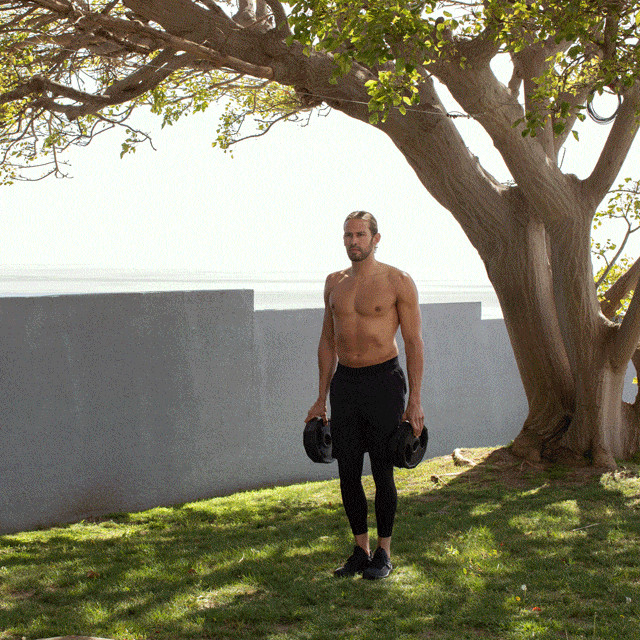
Lunge (pinch)
How: Stand tall and grip a weight plate in each hand (start with 10 pounds each), using only your fingers and thumbs. Lower into a forward lunge with the right leg until the front quad is parallel to the ground. Press through your right heel to return to standing for one rep. Perform 10 reps, then switch sides and repeat. Complete 4 sets.
When: This works well as a warm-up or finisher for lower-body and total-body workouts.
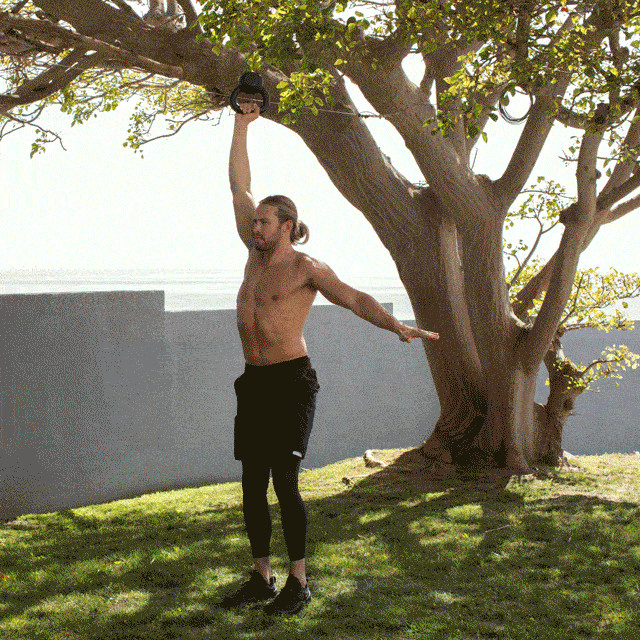
Bottoms-up Turkish get-up (capacity)
How: Lie on your back holding a kettlebell in a bottoms-up position in your right hand, directly over your right shoulder. (A 10- to 15-pound kettlebell is a good starting point.) Bend your right knee and plant your right foot firmly on the ground in front of your right glute. Lift your torso up and support your upper body on your left hand. Press through your right foot to thrust your hips up, forming a straight line from the right knee to the shoulders. Swoop your left leg under your hips and behind you until you’re kneeling on your left knee. Press through the left hand to assume a half-kneeling position, then press through your right foot and stand tall. Your right hand should remain extended above your right shoulder throughout. Slowly reverse the sequence to return to start, then switch sides and repeat for one rep. Perform 2 to 3 sets of 2 reps.
When: Do it to prep your body for knee-dominant exercises (like squats and lunges) or any workouts requiring shoulder stability.
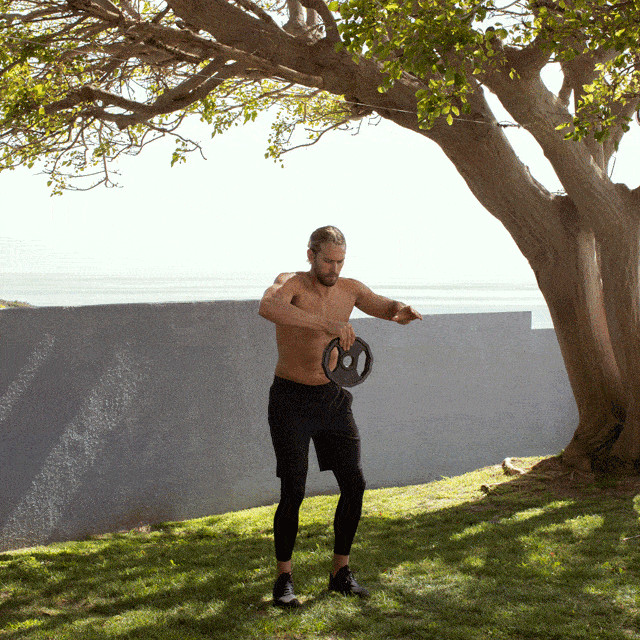
Drop-catch (pinch)
How: Hold the edge of a light weight plate at chest height with the fingers and thumb of one hand. Keeping your eyes locked on the weight, pull it up slightly, release it, then catch it with the thumb and fingers of the opposite hand. Continue alternating hands for 30 seconds, never letting the plate fall below your waist. Complete 4 sets.
When: Because it requires speed and hand-eye coordination, this move speeds up reaction time. Do it as a warm-up for agility-based workouts or sports competitions.
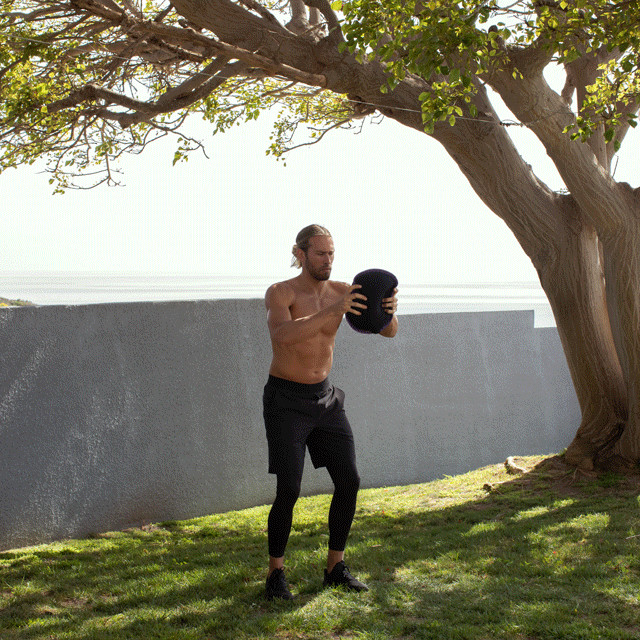
Sandbell drop-catch (crush)
How: Firmly grip a 5- to 10-pound sandbell in front of your chest with both hands, using your full fists and flexing your fingers and palms as much as possible. Keeping your eyes locked on the sandbell, toss it up slightly, release it, then catch it with both fists. Continue for 30 seconds, never letting the sandbell fall below your waist. Complete 4 sets.
When: Perform this exercise before heavy lifts to warm up the muscles needed for crush strength or after to fatigue them.
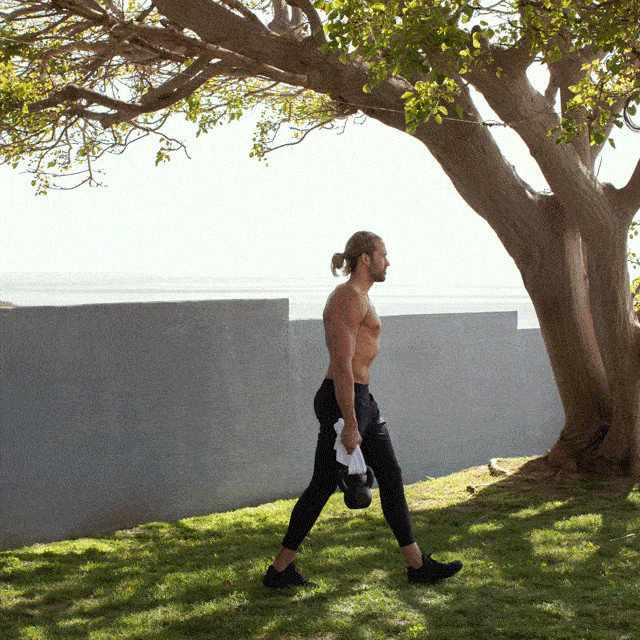
Carry (capacity)
How: Thread two hand towels through the handles of two heavy kettlebells, gripping the ends of one towel in each hand. Stand tall with arms by your sides and, without swaying from side to side, walk forward for 30 to 45 seconds. Complete 2 to 3 sets.
When: This drill combines grip strength and core stability. Do it as an exercise finisher at the end of your regular routine.
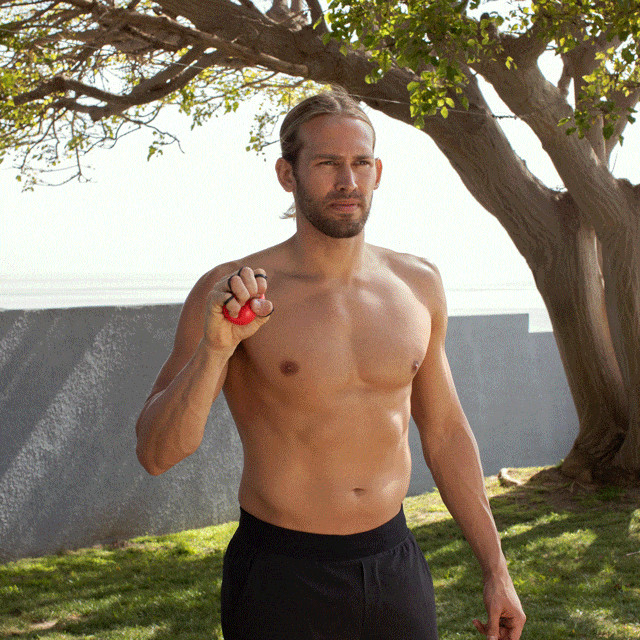
Finger flexion and extension (crush)
How: Thread your fingers through their respective holes of a hand grip ball. Flex the fingers and hand to squeeze the ball tightly, then release and extend your fingers as much as possible, creating resistance in the bands. Continue for 30 seconds, then switch sides and repeat. Complete 2 to 3 sets.
When: Perform this exercise before heavy lifts to warm up the fingers, between exercises to relax the finger flexors and forearms, or post-workout to fatigue the fingers. This will also create muscular balance between the front and back of your hand to help reduce the risk of finger injury.
